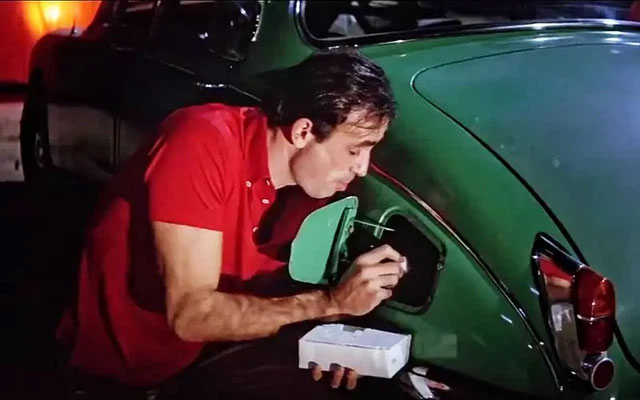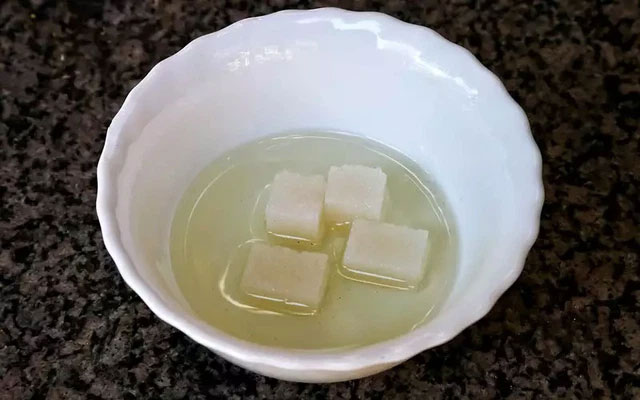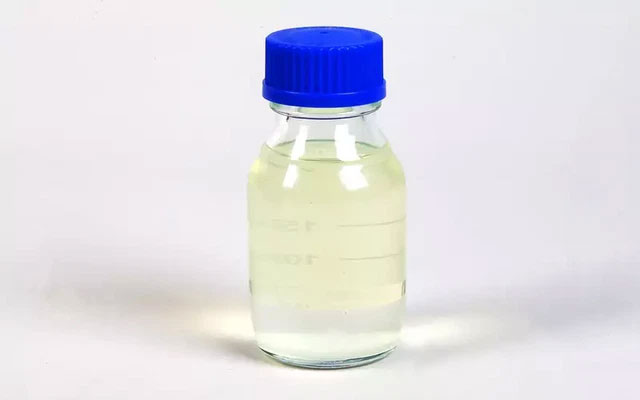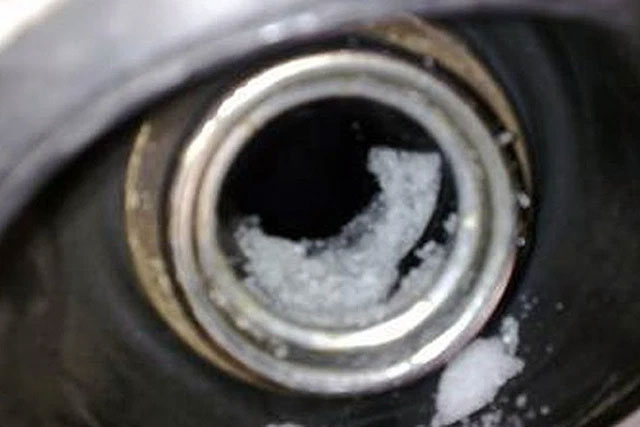We all understand that internal combustion engines require clean fuel to operate. But what if a malicious person wanted to pour sugar into your car’s gas tank to sabotage it?
The term “sugar in the gas tank” is often used metaphorically (very interesting) which you can explore yourself, but its literal meaning refers to the act of pouring sugar into a gas tank.
The Act of Pouring Sugar into a Gas Tank in Movies
In the famous French-Italian comedy “Razinya” from 1965, featuring actors Burville and de Funes, sugar was poured into a car’s gas tank as a prank, resulting in perfectly hilarious outcomes that left everyone in stitches.

Pouring sugar into a car’s gas tank as a prank
The 1996 film “Kingpin” also featured a notable scene regarding this issue. The villain poured sugary water into the gas tank to execute a nefarious plot against the car owner, resulting in a costly repair bill of $2,000.
Even children can guess that sugar is unlikely to be beneficial for a car engine, but the actual consequences remain a mystery.
What exactly happens when sugar infiltrates a car engine? Today, let’s explore this issue together.
First: How Do Sugar and Gasoline Interact When Mixed?
Before we delve into what happens when sugar is poured into a gas tank, let’s conduct an experiment mixing sugar and gasoline together.
Some sugar cubes were placed in a bowl of A-95 gasoline and soaked for an entire day, but the outcome was a resounding zero. It turns out that you cannot “create” a new type of gasoline with added sugar this way. The conclusion is: sugar does not dissolve in gasoline.

In reality, sugar does not dissolve in gasoline.
So, what happens if you add sugar to the gas tank? It might enter the fuel lines, but with one important condition: there must be water in the gas tank – even just a little. This often occurs, for instance, when humidity condenses in the air and enters the gas tank during refueling. Once there is water in the gas tank, sugar will partially dissolve.
With that assumption, the experiment continued. Gasoline, sugar, and water were mixed in a glass jar. Visibly, a thin layer of syrup-like liquid formed at the bottom, while gasoline floated on top due to its lower density.

A thin layer of syrup-like liquid formed at the bottom.
Can this syrup pass through the gas filter and enter the intake when the car is moving? It’s easy to check: a pump system and a fine gas filter were installed in the tank containing the gasoline-syrup mixture. This time, since everything was in liquid form, the gasoline and sweet syrup passed through the filter smoothly.
So, could this syrup dry out in the fuel lines? Theoretically, this should not happen because all lines are sealed, preventing water from evaporating. Naturally, the presence of sugar in the cylinder brings no benefits, but such a small amount of sugar would not cause any serious damage to the engine.
The Consequences of Putting Sugar in a Car’s Gas Tank
Another experiment illustrates the damage caused by pouring sugar into a gas tank. In 1994, forensic science professor John Thornton from the University of California, Berkeley mixed gasoline with sugar and marked it with radioactive carbon atoms. He used a centrifuge to separate the undissolved residues and measured the radioactivity of the gasoline to calculate the amount of sugar dissolved in it. It turned out that less than a teaspoon of sugar dissolved in 57 liters of gasoline, equivalent to the average amount of gasoline in a passenger car’s fuel tank.

The engine was not damaged, but sugar residue appeared inside.
If someone intentionally pours sugar into the gas tank, what other consequences could arise?
- First, this is difficult to do because modern cars are designed with a filler neck valve. This valve prevents outsiders from pouring anything into your car’s gas tank.
- Second, sugar does not dissolve in gasoline – we just saw this proven.
Of course, if the car’s gas tank is not completely full, the amount of dissolved sugar will also be less. This “strange solution” is clearly not dangerous enough to cause serious problems in the fuel system or engine, let alone “kill” it.
What Happens if You Put Sugar in a Lawn Mower’s Gas Tank?
In this clip, we will use a lawn mower. Clearly, if we used a high-end, new car, the visual and auditory experience would be more impressive, but fundamentally, the consequences of the sugar-gas mixture on the 4-stroke engine of the lawn mower will be similar.
Will sugar in the gas tank destroy the engine? See what it does to this engine!
Before conducting the experiment, some parts of the lawn mower engine were removed, and then the “sweet gas” mixture was poured in. If you were expecting spectacular explosions like in the movies, I sincerely apologize – that did not happen. The engine was not damaged, but sugar residue appeared inside, which tasted like burnt lollipop. However, in the long run, the engine will definitely encounter some unpleasant issues.


















































